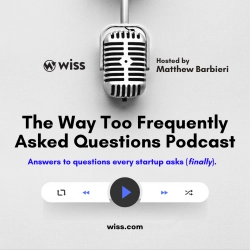The Paycheck Protection Program (PPP) became more favorable to small business as the Small Business Administration (SBA) in cooperation with the Department of Treasury, revised the loan calculation for sole proprietors, independent contractors, and those that are self-employed increasing their chances of obtaining a higher loan amount in contrast to existing guidance. Other important updates were included in two new pieces of guidance released March 3rd, including an updated set of loan Frequently Asked Questions (FAQ’s) in addition to a new Interim Final Rule (IFR) on Loan Amount Calculation and Eligibility. Keep in mind the PPP application window is set to close March 31st and some lenders have indicated they will stop accepting applications earlier than the deadline. The American Institute of Certified Public Accountants (AICPA) has lobbied Congress to extend the deadline but there has been no indication from government whether the application deadline will be extended. The $1.9 trillion American Rescue Plan provides for an additional $7.5 billion appropriation to the PPP loan program, we are hopeful the application deadline is extended soon. We highlight the most relevant details from the new guidance below.
Loan Amount and Calculation for Sole Proprietors, including Independent Contractors and the Self-Employed
Under existing guidance, Schedule C filers and Sole Proprietors determined their loan amount by using Net Profit reported on line 31 of Schedule C, which for many potential borrowers denied eligibility to apply for a PPP loan since their business may have reported a loss. There are many reasons why a business could report a loss on Schedule C, and since Sole Proprietors do not draw a salary, under existing guidance these borrowers were unable to obtain a loan. There are approximately 28 million Schedule C filers in the US, and the revised guidance will have an immediate impact on these small business concerns. The new IFR provides for a Gross Income calculation (from line 7 of Schedule C) that can be used to determine eligible loan amount for a Sole Proprietor. The revised guidance is applicable to a Schedule C filer with or without employees and is applicable to both 1st Draw and 2nd Draw borrowers.
The revised calculation using the Gross Income methodology is as follows:
Starting with Gross Income reported on line 7 of Schedule C, minus expenses reported on lines 14 (employee benefit programs), 19 (pension and profit-sharing plans), and 26 (wages less employment credits) of Schedule C. For Schedule C filers with no employees, they will simply use the existing Net Profit methodology or the Gross Income methodology.
Eligible use of PPP funds includes Payroll Costs, Non-Payroll costs such as rent, mortgage interest payments, utilities, operations expenditures, property damage costs, certain supplier costs, in addition to worker protective equipment.
One important distinction to highlight: If a Schedule C filer utilizes the Gross Income methodology, to mitigate the risk of fraud, any Schedule C filer that reports more than $150,000 gross income to calculate its 1st Draw PPP loan will not be able to claim the safe harbor regarding loan necessity. SBA intends to review a sampling of loan applications utilizing the Gross Income approach to assess whether these borrowers complied with PPP eligibility criteria, including the good faith needs based certification.
Unfortunately, Sole Proprietors that have already received a PPP loan will not be able to top-off their existing loan based on the revised loan calculation methodology. There could be a mechanism in the future for these borrowers to apply for the difference in loan amount based on the updated methodology, but as of today that is not an option.
Other Important Updates
The updated FAQ’s provide some important clarifications regarding other PPP loan program parameters, including:
- Number of Employees has been defined as the average number of employees over the time-period used to calculate the loan amount, either calendar year 2019 or 2020, OR the average number of employees per pay period in the 12 completed calendar months prior to the date of the loan application
- Certification and Necessity for 2nd Draw PPP borrowers (those that have received a 2nd PPP loan) has been clarified: Because 2nd Draw PPP loan borrowers must demonstrate that they experienced a 25% or more reduction in gross revenue, all 2nd Draw PPP loan borrowers will be deemed to have made the required certification concerning loan necessity in good faith. Additionally, the loan amounts received by borrowers for 1st Draw and 2nd Draw PPP loans will not be aggregated. This is welcome news and a positive update for the small busines community
- Loan Necessity Questionnaire is an additional form completed by PPP borrowers upon submission of their forgiveness application to their lender if the original PPP principal balance was $2 million or more. The LNQ requests information regarding business performance and liquidity, and the form is another piece of information used by SBA to determine if a borrower signed off on the necessity and liquidity certification in good faith. SBA has clarified that the certification is required to have been made in good faith at the time of the 1st Draw PPP loan application, even if subsequent developments resulted in the loan no longer being necessary. This is an important and welcome development as there has been much anxiety around the questionnaire, especially for those businesses that experienced poor performance during the 2nd QTR 2020, decided to apply for a received a PPP loan, and then the business recovered in the latter half of 2020. For companies that performed well this is an important update from SBA as it indicates the PPP worked for many companies by providing much needed short-term liquidity to maintain payroll and headcount, while focusing on the strategic steps necessary to survive government mandated shutdown orders in addition to a major economic slowdown
The PPP loan program is the signature jobs program introduced by the CARES Act in 2020. As of February 28th, the SBA has approved $678 billion in PPP loans and $156 billion has been approved in 2021. There is approximately $129 billion available to be lent to eligible borrowers.

 Previous
Previous


